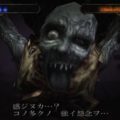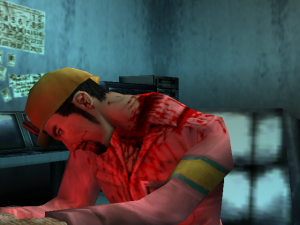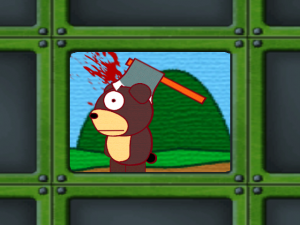


Pop N' Music 3 and 4 were 'append discs' which required first running the 2nd game to play them.Ī quirky Japanese only RPG that is a remake of a Mega Drive game. There ended up being 4 entries in total on the Dreamcast, each one improving the presentation quite a bit despite only having six months between each release. Like DDR the best way to play this is as close to the arcade version as possible which means acquiring the special Pop n' Music controller essentially a big slab with 9 big buttons on it in set colours to mash to the beat of the terribly cheesy music included.
Illbleed hardcore gaming 101 series#
Konami and their 'Benami' brand were what really kicked off the rhythm genre in the late 90s, and unlike DDR this series has never really got it's chance to shine in the west. Knocks Accalim's rubbish Wrestling games out of the ring without breaking a sweat.
Illbleed hardcore gaming 101 Pc#
The Dreamcast entry in the infamous Japanese 2D wrestling series that started it's life on the PC Engine, FP-WD features over 200 wrestlers from every federation at the time from around the world, and more game modes and options then you could ever hope for. Hop into a submarine and explore the depths of the sea where the creatures have mutated and evolved. Still, it had everything you would expect from a Cool Boarders: silly looking characters, funky tunes and an obnoxious commentator that slags you off for making mistakes.īased on an anime I recall quite enjoying back when they aired it on a channel over here called CNX, Time and Tide is a science fiction adventure game with some of the best cel-shaded graphics you will see on the Dreamcast. Sadly this was the only dedicated snowboarding game to show up on the Dreamcast, and being quite an early release it was a bit bare bones though thankfully they added some extra content for the western release. But as a game, its uninspired ideas of what constitutes amusement leave a lot to be desired.The Cool Boarders series that made it's name on the Playstation returned, though this entry got complete renames in both Europe and America for some reason. As a marketing vehicle, Shinken Yūgi faithfully captures the Segata Sanshiro spirit. But before all that, he made his video game debut in Segata Sanshir? Shinken Yūgi, a compilation of Sanshiro-themed mini-games released toward the end of the Saturn life cycle (less than a month before the Dreamcast's release). Some of these appearances are minor cameos: he made his first (albeit brief) Western debut in Sonic & All-Stars Racing Transformed, and more recently shows up as a support unit in Project X Zone 2.

So it was only a matter of time before he started showing up in video games. First appearing on television in 1997, this early Kevin Butler predecessor, with his stern attitude and goofy pompadour, quickly earned the adoration of many gamers.

However, another reason for its success in Japan may have been because Segata Sanshiro kept the console's momentum going even in its later years. Now a lot of this was because of a strong library of games (few of which were translated for international audiences) and a lack of the mismanagement that characterized the Saturn in the West. While the Sega Saturn proved unpopular among contemporary American players, the system garnered far more love in Japan.


 0 kommentar(er)
0 kommentar(er)
